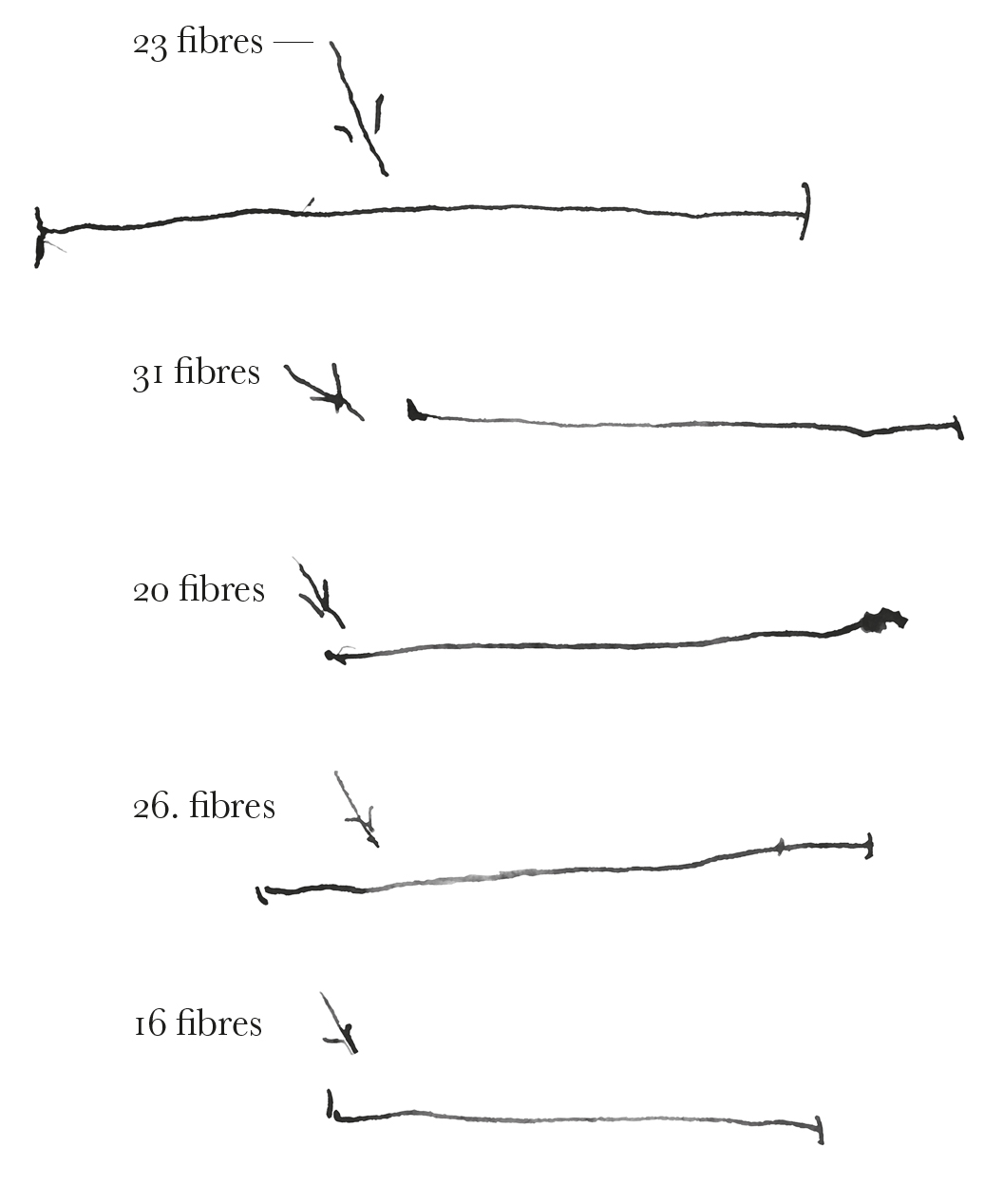From Francis and Amy Darwin 8 August [1874]1
Mürren2
Sat Aug 8th
My dear Father

Thank you very much for yr little letter— I will explain the hieroglyphics above directly— What a fine beast-catcher U. minor must be.3 We have found Parnessus grass4 here & hoped it would be a fly catcher but it doesnt seem to be, it is not sticky & as far as a codringten5 will show has no glands. We have found lots of Pinguicula—chiefly vulgaris, some which looks like Lusitanica with a dash of vulgaris in it so perhaps Hooker is right about the variety;6 some looking like vulgaris in other respects but having a tinge of the Lusitanica purple— They seem not to catch insects nearly so much here. I rooted up a lot to count them but as Amy & I had spread them out to begin we were interupted by an acquaintance whom we had to walk home with & now they have been scrummaged in a bit of paper & are not trustable— First we thought they didnt catch any but then we found some— I will try & make out accurately tomorrow—but one would say it was a very rare exception to find insects— The flies may have been washed off but I dont think so as the edges were well curled & so ought to have prevented all being washed off; also the leaves were bathed in secretion which doesnt look like a recent washing— But there has been much rain so perhaps this only shows how quick the secretion forms— That bending back of the leaves is certainly not a P. Mortem appearance— Amy has drawn one the minute as it came from the soil. I saw four with (I think) Carex seeds & some with heath leaves looked quite familiar—not E. tetralix tho’— The most curious thing is that they have such great big roots—which looks as if they didn’t get much animal food—7 I think Amys only had roots of very few small fibres— I have counted them in 5 plants (the numbers are certainly understated.) the inklines show the length of longest fibre in each root— they are good stout fibres as you can see by the few I send— If I can make out that they dont catch flies—it will be fine— When we were out of a diligence8 walking over a bit of a pass, we found a big yellow Salvia with every flower bitten— do the bees bite the blue & red garden ones in England?9 We have rather wet weather here it is generally cloudy either morning or afternoon— There is an English Bentham here— just think he says the leaves are covered with “crystalline points”.10 I asked the daughter of the Hôtel whether they used Pinguicula for making cheese, but she said not & thought us amiable maniacs Wasn’t it fine Pagets offering me that post it makes it better that he examined me himself—11 We have been up a small mountain today & came down rather quick as it was raining & Amy is a bit tired— she has been very well all the time & will be all right tomorrow.
Your affectionate | secretaries | Frank | Amy
Amy tells me to say she thinks this impudent12
CD annotations
Footnotes
Bibliography
Bentham, George. 1865b. Handbook of the British flora; a description of the flowering plants and ferns indigenous to, or naturalized in, the British Isles. For the use of beginners and amateurs. 2 vols. London: Lovell Reeve & Co.
Bradbury, Savile. 1967. The evolution of the microscope. Oxford: Pergamon Press.
Chambers: The Chambers dictionary. Edinburgh: Chambers Harrap Publishers. 1998.
Correspondence: The correspondence of Charles Darwin. Edited by Frederick Burkhardt et al. 29 vols to date. Cambridge: Cambridge University Press. 1985–.
Cross and self fertilisation: The effects of cross and self fertilisation in the vegetable kingdom. By Charles Darwin. London: John Murray. 1876.
Insectivorous plants. By Charles Darwin. London: John Murray. 1875.
Summary
Describe the Pinguicula species found at Mürren. Have found seeds on some. Their large roots seem to indicate that they do not get much animal food.
Letter details
- Letter no.
- DCP-LETT-9595
- From
- Francis Darwin; Amy Richenda (Amy) Ruck/Amy Richenda (Amy) Darwin
- To
- Charles Robert Darwin
- Sent from
- Mürren
- Source of text
- DAR 58.1: 139–40
- Physical description
- ALS 4pp †
Please cite as
Darwin Correspondence Project, “Letter no. 9595,” accessed on
Also published in The Correspondence of Charles Darwin, vol. 22


